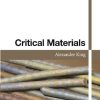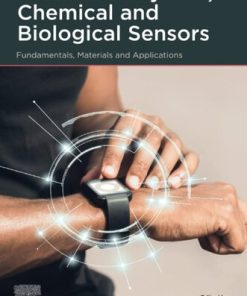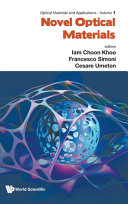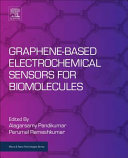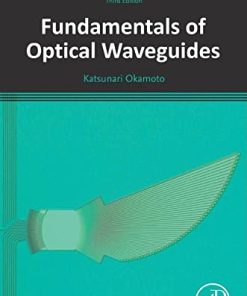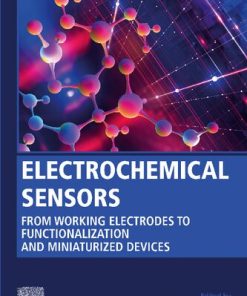Optical Fiber Sensors Fundamentals for Development of Optimized Devices 1st edition by Ignacio Del Villar, Ignacio Matias 1119534798 9781119534792
$50.00 Original price was: $50.00.$25.00Current price is: $25.00.
Optical Fiber Sensors: Fundamentals for Development of Optimized Devices 1st edition by Ignacio Del Villar, Ignacio R. Matias – Ebook PDF Instant Download/DeliveryISBN: 1119534798, 9781119534792
Full download Optical Fiber Sensors: Fundamentals for Development of Optimized Devices 1st edition after payment.

Product details:
ISBN-10 : 1119534798
ISBN-13 : 9781119534792
Author : Ignacio Del Villar, Ignacio R. Matias
The most complete, one-stop reference for fiber optic sensor theory and application
Optical Fiber Sensors: Fundamentals for Development of Optimized Devices constitutes the most complete, comprehensive, and up-to-date reference on the development of optical fiber sensors. Edited by two respected experts in the field and authored by experienced engineers and scientists, the book acts as a guide and a reference for an audience ranging from graduate students to researchers and engineers in the field of fiber optic sensors.
Optical Fiber Sensors: Fundamentals for Development of Optimized Devices 1st Table of contents:
1 Introduction
References
2 Propagation of Light Through Optical Fibre
2.1 Geometric Optics
2.2 Wave Theory
2.3 Fibre Losses and Dispersion
2.4 Propagation in Microstructured Optical Fibre
2.5 Propagation in Specialty Optical Fibres Focused on Sensing
2.6 Conclusion
References
3 Optical Fibre Sensor Set‐Up Elements
3.1 Introduction
3.2 Light Sources
3.3 Optical Detectors
3.4 Light Coupling Technology
3.5 Fibre‐Optic Device
3.6 Optical Modulation and Interrogation of Optical Fibre‐Optic Sensors
References
4 Basic Detection Techniques
4.1 Introduction
4.2 Overview of Interrogation Methods
4.3 Intensity‐Based Sensors
4.4 Polarization‐Based Sensors
4.5 Fibre‐Optic Interferometers
4.6 Grating‐Based Sensors
4.7 Conclusions
References
5 Structural Health Monitoring Using Distributed Fibre‐Optic Sensors
5.1 Introduction
5.2 Fundamentals of Distributed Fibre‐Optic Sensors
5.3 DFOS in Civil and Geotechnical Engineering
5.4 DFOS in Hydraulic Structures
5.5 DFOS in the Electric Grid
5.6 Conclusions
References
6 Distributed Sensors in the Oil and Gas Industry
6.1 The Late Life Cycle of a Hydrocarbon Molecule
6.2 Challenges in the Application of Optical Fibres to the Hydrocarbon
6.3 Applications and Take‐Up
6.4 Summary
References
7 Biomechanical Sensors
7.1 Optical Fibre Sensors in Biomechanics: Introduction and Review
7.2 Optical Fibre Sensors: From Experimental Phantoms to In Vivo Applications
7.3 FBG Sensors Integrated into Mechanical Systems
7.4 Future Perspective
Acknowledgment
References
8 Optical Fibre Chemical Sensors
8.1 Introduction
8.2 Principles and Mechanisms of Fibre‐Optic‐Based Chemical Sensing
8.3 Sensor Design and Applications
8.4 Conclusions and Future Outlook
Acknowledgements
References
9 Application of Nanotechnology to Optical Fibre Sensors
9.1 Introduction
9.2 A View Back
9.3 Nanofabrication Techniques on the Fibre Tip for Biochemical Applications
9.4 Nanofabrication Techniques on the Fibre Tip for Optomechanical Applications
9.5 Conclusions
References
10 From Refractometry to Biosensing with Optical Fibres
10.1 Basic Sensing Concepts and Parameters for OFSs
10.2 Optical Fibre Refractometers
10.3 Optical Fibre Biosensors
10.4 Fibre Optics Towards Advanced Diagnostics and Future Perspectives
References
11 Humidity, Gas, and Volatile Organic Compound Sensors
11.1 Introduction
11.2 Optical Fibre Sensor Specific Features for Gas and VOC Detection
11.3 Sensing Materials
11.4 Detection of Single Gases
11.5 Relative Humidity Measurement
11.6 Devices for VOC Sensing and Identification
11.7 Artificial Systems for Complex Mixtures of VOCs: Optoelectronic Noses
11.8 Conclusions
References
12 Interaction of Light with Matter in Optical Fibre Sensors
12.1 Introduction
12.2 Energy Content in Light and Its Effect in Chemical Processes
12.3 Relevance of Wien’s Law to Physicochemical Processes
12.4 Absorption of Light by Molecules
12.5 The Role of Electron Spin and State Multiplicity in Spectroscopy
12.6 Molecular Orbitals, Bond Conjugation, and Photoisomerization
12.7 De‐excitation Processes Through Competing Pathways: Their Effect on Lifetimes and Quantum Yield
12.8 Energy Level Diagrams and Vibrational Sublevels
12.9 Distinction Between Absorption and Action Spectra
12.10 Light Scattering Processes
12.11 Induction of Non‐linear Optical Processes
12.12 Concentrating Fields to Maximize Energy Exchange in the Measurement Process Using Slow Light
12.13 Field Enhancement and Improved Sensitivity Through Whispering Gallery Mode Structures
12.14 Emergent Technological Trends Facilitating Multi‐parametric Interactions of Light with Matter
12.15 Prospects of Molecular Control Using Femtosecond Fibre Lasers
References
13 Detection in Harsh Environments
13.1 Introduction
13.2 Optical Fibre Sensors for Harsh Environments
13.3 Need for Harsh Environment Sensing Based on Optical Fibres
13.4 General Requirements for Harsh Environment OFSs
13.5 Silica Glass Optical Fibres for Harsh Environment Sensing
13.6 Polymer Optical Fibres for Harsh Environment Sensing
13.7 Chalcogenide Glass and Polycrystalline Silver Halide Optical Fibres for Harsh Environment Sensing
13.8 Monocrystalline Sapphire Optical Fibres for Harsh Environment Sensing
13.9 Future Trends in Optical Fibre Sensing
References
14 Fibre‐Optic Sensing
14.1 Introductory Comments
14.2 Reflections on Achievements to Date
14.3 Photonics: How Is It Changing?
14.4 Some Future Speculation
14.5 Concluding Observations
People also search for Optical Fiber Sensors: Fundamentals for Development of Optimized Devices 1st:
distributed optical fiber sensors
types of optical fiber sensors
what are active optical fiber sensors
international conference on optical fiber sensors
29th international conference on optical fiber sensors
Tags: Optical Fiber Sensors, Fundamentals, Development, Optimized Devices, Ignacio Del Villar, Ignacio Matias
You may also like…
Engineering - Bioengineering
Engineering
Fundamentals of Semiconductor Devices 2nd Edition by Betty Anderson 1259877971 9781259877971
Chemistry - Biochemistry
Graphene-Based Electrochemical Sensors for Biomolecules 1st Edition Alagarsamy Pandikumar
Computers - Web Development
Uncategorized



